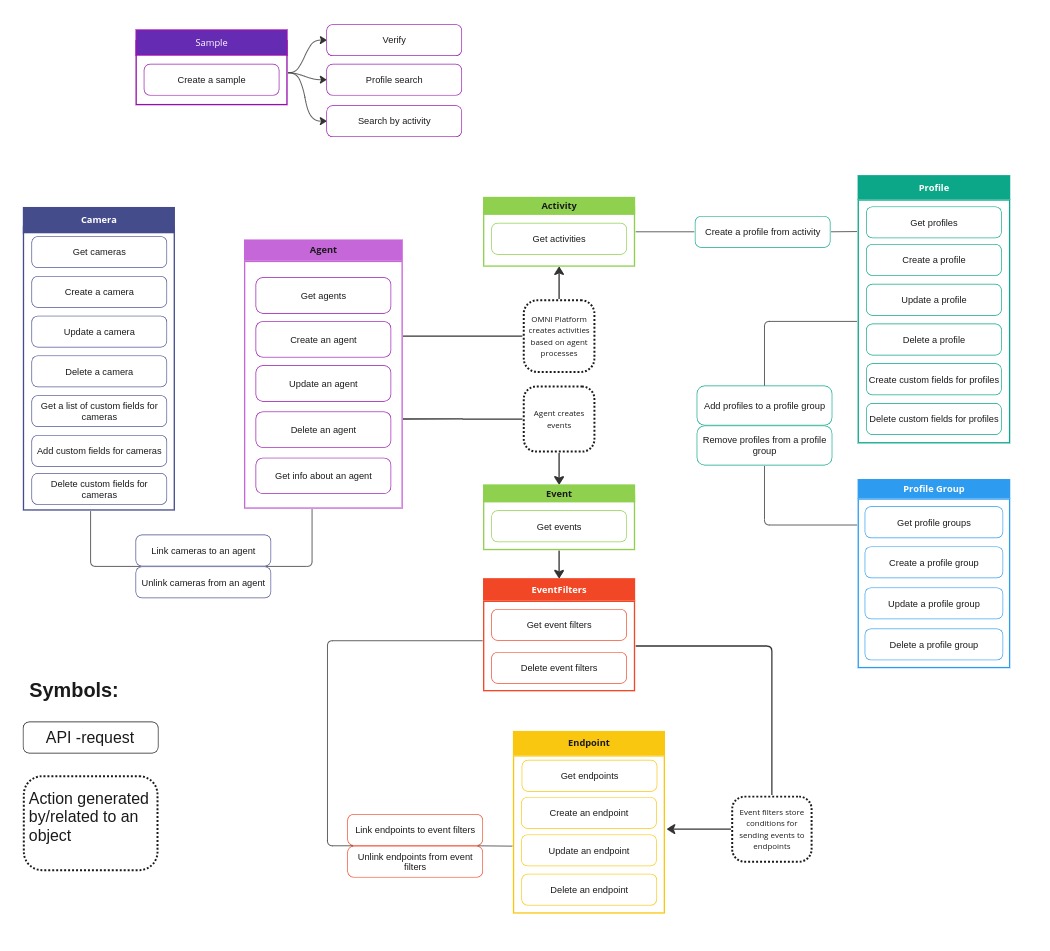Object model

Sample
Object that stores the result of image processing in the following format:
- Sample ID
- Sample creation date in ISO 8601
- Last sample modification date in ISO 8601
- Detection result (SampleData)
The sample is used by OMNI Platform to create profiles and compare faces. Face comparison (identification and verification) means the comparison of biometric face templates stored in samples.
Profile
Object contains metadata about a person, person's image (avatar), activity and a set of samples, including the main sample.
To create a profile in OMNI Platform, a person's image (avatar) is uploaded via the web interface or integration API. A sample is created from the uploaded image, and is automatically linked to the profile. This first created sample by default becomes the main sample of the profile, i.e. a sample that will be used for face identification and verification. For people who get into the camera's field of view and do not have profiles in the system, the profiles can be created from activities.
Profile group
Object contains a set of profile IDs and metadata about the group. Profiles are grouped according to arbitrary criteria, such as VIP clients, employees, etc.
Activity
An object that stores information about any detected human presence in the camera's field of view. This type of dynamic data is transmitted by OMNIAgents and stored in the form of agent processes.
When a person appears in the frame, OMNI Agent starts to form processes of various types (person, track, face, body, emotions, etc.), which are transmitted to OMNI Platform or external services via a webhook.
Activity is a set of processes that belong to a specific person (from the moment a person appears in the camera's field of view until leaving the frame).
All binary images (crops) extracted from the processes, biometric templates and face attributes are stored in the platform database. Next, the biometric template from the activity is compared with the biometric templates from the main profile samples from the database.
If the similarity result (score) is equal to or greater than the threshold value (score_threshold), which is 0.85 by default, a profile ID is attached to the activity, after which this activity is added to the profile. If for all profiles the similarity result did not exceed the threshold value, the activity refers to a person who does not have a profile in the database. In this case, you can create a profile by activity through the web interface or the integration API.
Event
Event is a data format that represents recognition and tracking results as facts (Event types).
EventFilters
The object is responsible for filtering events before sending them to attached endpoints. It stores the identifiers of the entities by which filtering should occur (by camera ids, agent ids, profilegroup ids or event types).
Event service endpoints
The object is responsible for sending events via a websocket (websocket endpoint) or to a webhook server (webhook endpoint). Websocket endpoint ids act as websocket connection tokens.
Agent
Object stores information about OMNI Agent, including identifier, name, creation and modification date, agent status (active/stopped), list of identifiers of peripheral devices (cameras) connected to the agent, and other related parameters.
Camera
Object stores edge device (camera) data.